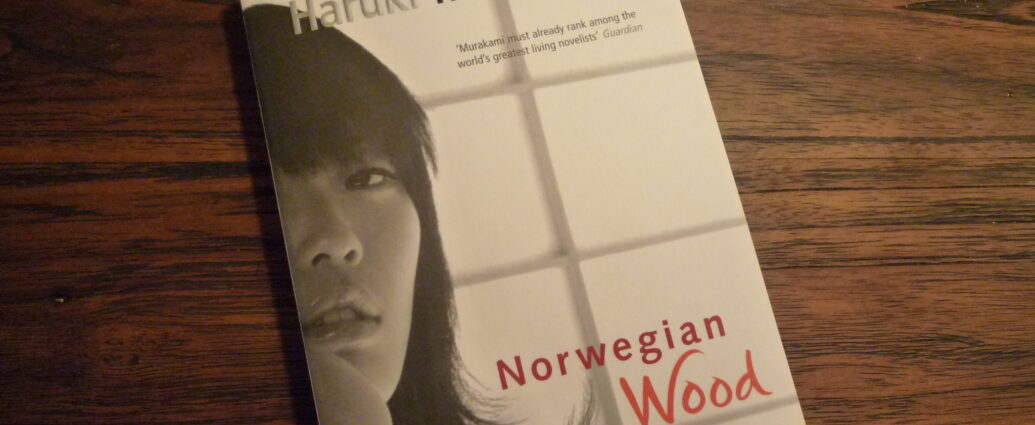Anastasiia Danyliuk
The fervent discussions around Haruki Murakami’s Norwegian Wood (1987), filled with criticism, admiration, disgust, and fascination, began more than three decades ago and have not ceased since.
Each of Murakami’s novels feels like a conversation. It is not small talk scraping the surface of vulnerability, nor is it a carefully structured debate reserved for vast auditoria. Instead, it is the kind of conversation you would have during the darkest hours of the night, sharing a kitchen table and your deepest dreams. It is the beauty of two souls briefly passing each other, making sense out of staggering confessions and mute regrets.
“Murakami’s writing traces the invisible threads that connect us, like snippets of overheard dialogues.”
ON BEING HUMAN
Norwegian Wood follows Toru Watanabe, a Japanese drama student coming of age at the turn of the sixties. After his close friend, Kizuki, takes his own life, Toru is forced to learn how to navigate an existence permeated by death, grief, and fragility. In the midst of this, he forms a profound emotional connection with Kizuki’s childhood best friend and girlfriend Naoko, a relationship that tiptoes the fine line between healing and destruction.
Murakami’s novel exceeds genre expectations. Is it a love story? A Bildungsroman? A mystery? Most likely none (or all) of the above! At its core, each narrative is an exploration of the basic elements that make up humanity. Murakami’s writing traces the invisible threads that connect us, like snippets of overheard dialogues.
In his conversation with Mieko Kawakami, Murakami says of his writing: “I don’t think any of my characters are that complex. The focus is on the interface, or how these people, both men and women, engage with the world they’re living in.
“If anything, I take great care not to dwell too much on the meaning of existence, its importance or its implications. Like I said earlier, I’m not interested in individualistic characters.”
“Norwegian Wood is deceptively straightforward due to the lack of magical realism intrinsic to the author’s other works.”
In Norwegian Wood, Murakami makes no exception to this rule. While the novel deals with deeply existential themes, it does not seek answers to everlasting questions, nor does it offer ultimate solutions. On the contrary, it is positioned in the grey zone of not-quite-knowing, a small observation deck before the panorama of humans grappling with being.
ON THE (UN)RELIABILITY OF MEMORY
At the novel’s open, a 37-year-old Toru reflects upon his youth. From that moment on, the narrative spins forward like an endless string dripping with dim beads of memories. Some come into sharp focus, illuminated by hope or traced over with pain. Some stay in the darkness, voices melting into echoes.
The motif of memory’s fleetingness resonates through one of the first internal monologues of the novel:
“It’s true, I can’t even bring back her face — not straight away, at least. All I’m left holding is a background, pure scenery, with no people at the front.”
In Norwegian Wood, Murakami lets his characters wander the steep slopes of the subconscious. Living and dead alike, they haunt each other. They make up a solar system of supressed experiences, dark desires, but also, of painstakingly human moments. Murakami’s writing is truly remarkable in its placement of emphases. With just a few lines, the text evokes a sense of nostalgia by laying out a scene which feels uncannily familiar to readers:
“Long after the firefly had disappeared, the trail of its light remained inside me, its pale, faint glow hovering on and on in the thick darkness behind my eyelids like a lost soul.”
BETWEEN THE LINES
If you are not yet familiar with Murakami, I would not recommend Norwegian Wood as a starting point. While it is his signature piece, it is one of the most intense in its imagery. A great plunge into Murakami’s typical narrative would be After Dark (2004) or Hear the Wind Sing (1979).
Norwegian Wood is deceptively straightforward due to the lack of magical realism intrinsic to the author’s other works. However, it is not devoid of emotional depth. You just have to look past the surface and beyond the semantics, into the world of fundamental feelings that plant roots in one’s soul, the world of beauty and pain in human connections.
READ NEXT:
-
WHY WE SHOULD BE READING TRANSLATED FICTION
-
CHARITY SHOP BOOK FINDS: ‘THE WOMAN DESTROYED’ BY SIMONE DE BEAUVOIR
-
HOW BOOKTOK IS INFLUENCING THE NEXT GENERATION OF READERS
Featured image courtesy of Wilbert de Groot via Flickr. No changes were made to this image. Image license found here.

